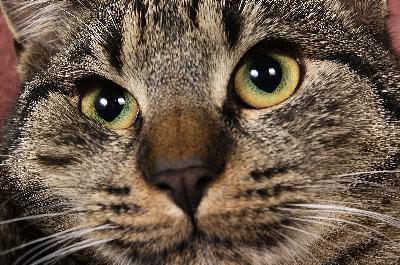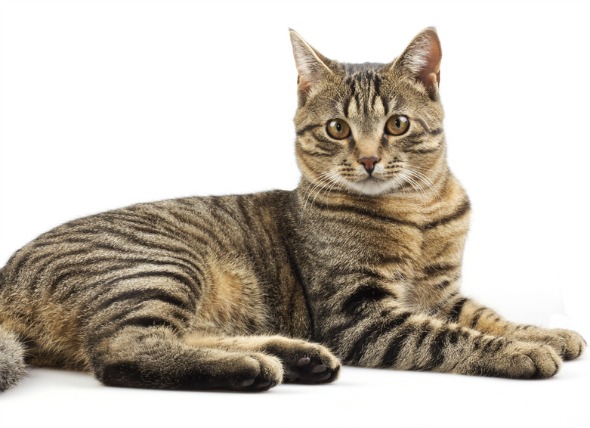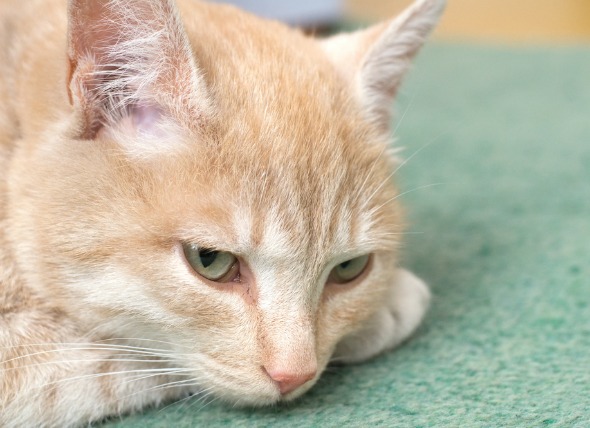
The cerebellum is part of the normal animal brain, and makes up a large portion of the brain's matter. The cerebellum lies under the cerebrum and toward the back, above and behind the brainstem. Cerebellar hypoplasia occurs when parts of the cerebellum are not completely developed. This condition can occur due to intrinsic (genetic) causes, or due to extrinsic causes like infections, toxins or nutritional deficiencies. Symptoms are visible when kittens begin to stand and walk, around six weeks of age.
You will need to give a thorough history of your cat's health, including a background history of symptoms, and any history that you can provide about your cat's family line. Your veterinarian will conduct a complete physical exam, including a blood chemical profile, a complete blood count, an electrolyte panel and a urinalysis to rule out other causes related to infection of the brain, or damage due to toxins in the environment.
Animals affected with cerebellar hypoplasia will usually show signs at birth or shortly thereafter. Kittens may show a slow progression of symptoms over the course of weeks or months. After the final postnatal (infant stage) onset of cerebellar hypoplasia, your kitten should not show any further progression of signs of this disorder. Age, breed, family or health history, and typical non-progressive symptoms are usually sufficient for a tentative diagnosis.
There is no treatment for cerebellar hypoplasia. While this condition is permanent, the symptoms should not worsen and affected cats will have a normal life span.
Your cat will be developmentally disabled, so it will not be able to make decisions to protect itself as other cats are able to. You will need to restrict your cat's activity and movement so as to prevent injuries and road accidents. Climbing, falling, or freedom of movement, all of the normal things that cats do, will need to be taken into consideration with your cat. In the case of severely brain deficient animals that are unable to feed or groom themselves, or to be house trained, euthanasia may need to be considered.
 Why Do Cats Head-Butt?
Why Do Cats Head-Butt?
Why Do Cats Hea
Why Do Cats Head-Butt?
Why Do Cats Head-Butt?
Why Do Cats Hea
 Why Do Cats Knead the Blankets Before Going to Sleep?
Why Do Cats Knead the Blankets Before Going to
Why Do Cats Knead the Blankets Before Going to Sleep?
Why Do Cats Knead the Blankets Before Going to
 Pain from the Nervous System in Cats
Neuropathic Pain in Cats
An injury or disease rel
Pain from the Nervous System in Cats
Neuropathic Pain in Cats
An injury or disease rel
 Botflies (Maggots) in Cats
Cuterebrosis in Cats
Botflies, flies that are of
Botflies (Maggots) in Cats
Cuterebrosis in Cats
Botflies, flies that are of
 Blood Related Deficiencies in Cats
Pancytopenia in Cats
Pancytopenia does not actual
Blood Related Deficiencies in Cats
Pancytopenia in Cats
Pancytopenia does not actual
Copyright © 2005-2016 Pet Information All Rights Reserved
Contact us: www162date@outlook.com